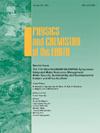区域地质调查工作进展——来自2024年全国区域地质调查会议和广东韶关6年铀矿勘查案例研究的启示
IF 4.1
3区 地球科学
Q2 GEOSCIENCES, MULTIDISCIPLINARY
引用次数: 0
摘要
随着全球对矿产资源需求的增长和生态需求的加强,区域地质调查已成为推进可持续资源开采和环境管理的关键工具。然而,目前的方法在技术集成、多源数据互操作性和对地质复杂地形的适应性方面面临着严重的限制。本文综合了中国2024年全国地质调查会议和在广东韶关进行的为期六年的铀勘探项目的见解,系统地评估了调查方法的变革进展。分析揭示了高光谱遥感、地球物理反演和地球化学分析的协同应用如何在解决勘探效率和生态保护之间长期存在的紧张关系的同时,精确识别铀富集带。主要研究结果表明,与传统工作流程相比,智能数据融合架构将勘探周期缩短了40%,而支持区块链的地理数据共享协议在试点跨洲项目中将国际协作效率提高了67%。通过机器学习增强的三维地质建模,进一步建立了成矿模式与构造演化模式之间的定量联系。通过提出一种政策整合的勘探范式,平衡矿物回收率和栖息地保护指标,本工作为气候适应性采矿实践建立了一个可复制的框架。这些创新重新定义了深部矿产定位的区域调查能力,并为具有不同地质环境的发展中地区的关键矿产安全提供了可扩展的解决方案,最终将技术主权与全球环境治理要求联系起来。本文章由计算机程序翻译,如有差异,请以英文原文为准。
Advancements in regional geological Surveys: Insights from the 2024 China national regional geological survey conference and a six-year uranium exploration case study in Shaoguan, Guangdong
Amidst growing global demand for mineral resources and intensified ecological imperatives, regional geological surveys have emerged as pivotal tools for advancing sustainable resource extraction and environmental stewardship. Current approaches, however, face critical limitations in technological integration, multi-source data interoperability, and adaptability to geologically complex terrains. This review synthesizes insights from China's 2024 National Geological Survey Conference and a six-year uranium exploration program in Shaoguan, Guangdong, systematically evaluating transformative advancements in survey methodologies. The analysis reveals how the synergistic application of hyperspectral remote sensing, geophysical inversion, and geochemical analytics enables precise identification of uranium-enriched zones while resolving long-standing tensions between exploration efficiency and ecological preservation. Key findings demonstrate that intelligent data fusion architectures reduce exploration cycles by 40 % compared to conventional workflows, while blockchain-enabled geodata-sharing protocols increase international collaboration efficacy by 67 % in pilot transcontinental projects. The study further establishes quantitative linkages between metallogenic models and tectonic evolution patterns through machine learning-enhanced 3D geological modeling. By proposing a policy-integrated exploration paradigm that balances mineral recovery rates with habitat conservation metrics, this work establishes a replicable framework for climate-resilient mining practices. These innovations redefine regional survey capabilities in deep mineral targeting and provide scalable solutions for critical mineral security in developing regions with heterogeneous geological settings, ultimately bridging technological sovereignty with global environmental governance imperatives.
求助全文
通过发布文献求助,成功后即可免费获取论文全文。
去求助
来源期刊

Physics and Chemistry of the Earth
地学-地球科学综合
CiteScore
5.40
自引率
2.70%
发文量
176
审稿时长
31.6 weeks
期刊介绍:
Physics and Chemistry of the Earth is an international interdisciplinary journal for the rapid publication of collections of refereed communications in separate thematic issues, either stemming from scientific meetings, or, especially compiled for the occasion. There is no restriction on the length of articles published in the journal. Physics and Chemistry of the Earth incorporates the separate Parts A, B and C which existed until the end of 2001.
Please note: the Editors are unable to consider submissions that are not invited or linked to a thematic issue. Please do not submit unsolicited papers.
The journal covers the following subject areas:
-Solid Earth and Geodesy:
(geology, geochemistry, tectonophysics, seismology, volcanology, palaeomagnetism and rock magnetism, electromagnetism and potential fields, marine and environmental geosciences as well as geodesy).
-Hydrology, Oceans and Atmosphere:
(hydrology and water resources research, engineering and management, oceanography and oceanic chemistry, shelf, sea, lake and river sciences, meteorology and atmospheric sciences incl. chemistry as well as climatology and glaciology).
-Solar-Terrestrial and Planetary Science:
(solar, heliospheric and solar-planetary sciences, geology, geophysics and atmospheric sciences of planets, satellites and small bodies as well as cosmochemistry and exobiology).
 求助内容:
求助内容: 应助结果提醒方式:
应助结果提醒方式:


